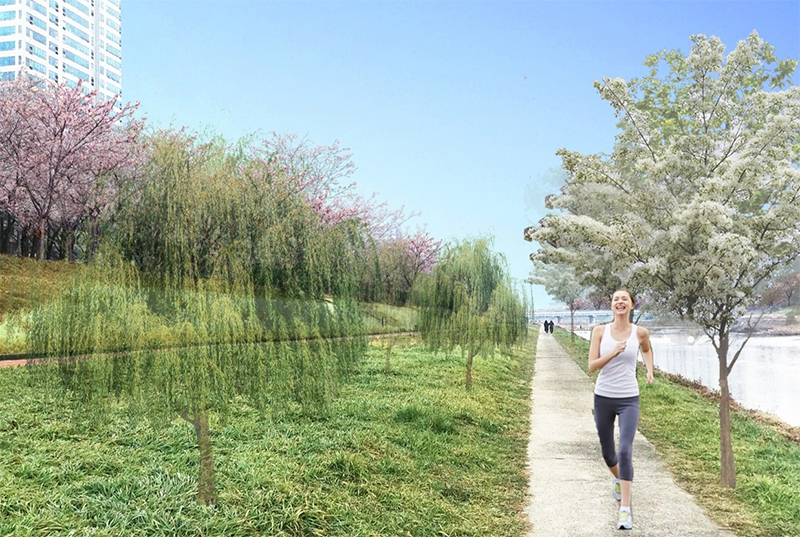
Photo: Plans for urban ‘wind path forests’, Seoul Metropolitan Government
Platform calculates green infrastructure ROI
22 June 2021
by Sarah Wray
New open-source software developed by researchers at Stanford University aims to help cities prioritise their investments in green infrastructure.
The Urban InVEST platform, created through the Stanford Natural Capital Project, generates maps to visualise the links between nature and people’s wellbeing.
City planners and developers can use it free to better understand where investments in nature can maximise benefits such as protection from flooding and improved health.
The tool allows for the combination of environmental data, such as temperature patterns, with social demographics and economic data, such as income levels. Users can input their city’s datasets into the software or access a range of open global data sources, from NASA satellites to local weather stations.
To address the climate crisis and improve liveability, cities are increasingly implementing green infrastructure, such as tree-lined paths and natural flood defences. However, without detailed information about the impact of infrastructure, they can’t strategically invest, the researchers say.
“We’re answering three crucial questions with this software: where in a city is nature providing what benefits to people, how much of each benefit is it providing and who is receiving those benefits?” said Perrine Hamel, lead author on a new paper about the software published in the Urban Sustainability journal and Livable Cities Program Lead at the Stanford Natural Capital Project at the time of research.
Tested in cities
To test Urban InVEST, the research team applied the software in multiple cities, including Paris, France; Lausanne, Switzerland; Shenzhen and Guangzhou, China; and San Francisco and Minneapolis in the US.
In many cases, they worked with local partners to understand priority questions. In Paris, for instance, candidates in a municipal election were campaigning on the need for urban greenery, while in Minneapolis, planners were deciding how to repurpose underused golf course land.
In Shenzhen, the researchers used Urban InVEST to calculate how natural infrastructure like parks, grassland and forest would reduce damages in the event of a severe, ‘100-year storm’. They found that it would help avoid US$25 billion in damages by soaking up rain and diverting floodwaters.
They also found that natural infrastructure, including trees and parks, was reducing the daily air temperature in Shenzhen by 5.4 degrees Fahrenheit (3 degrees Celsius) during hot summer days, providing a value of US$71,000 per day in benefits to the city.
Equity
Several studies have shown that lower-income communities often have less access to nature in cities and Urban InVEST can help with the equitable distribution of green infrastructure, the researchers say. This includes determining where parks and bike paths could be most effective and deciding how land should be used.
Outside the research setting, Urban InVEST has helped inform an assessment of how nature might help store carbon and lower temperatures in 775 European cities.
The new software joins the Natural Capital Project’s existing InVEST suite of tools to map and model the benefits that nature provides to people.







